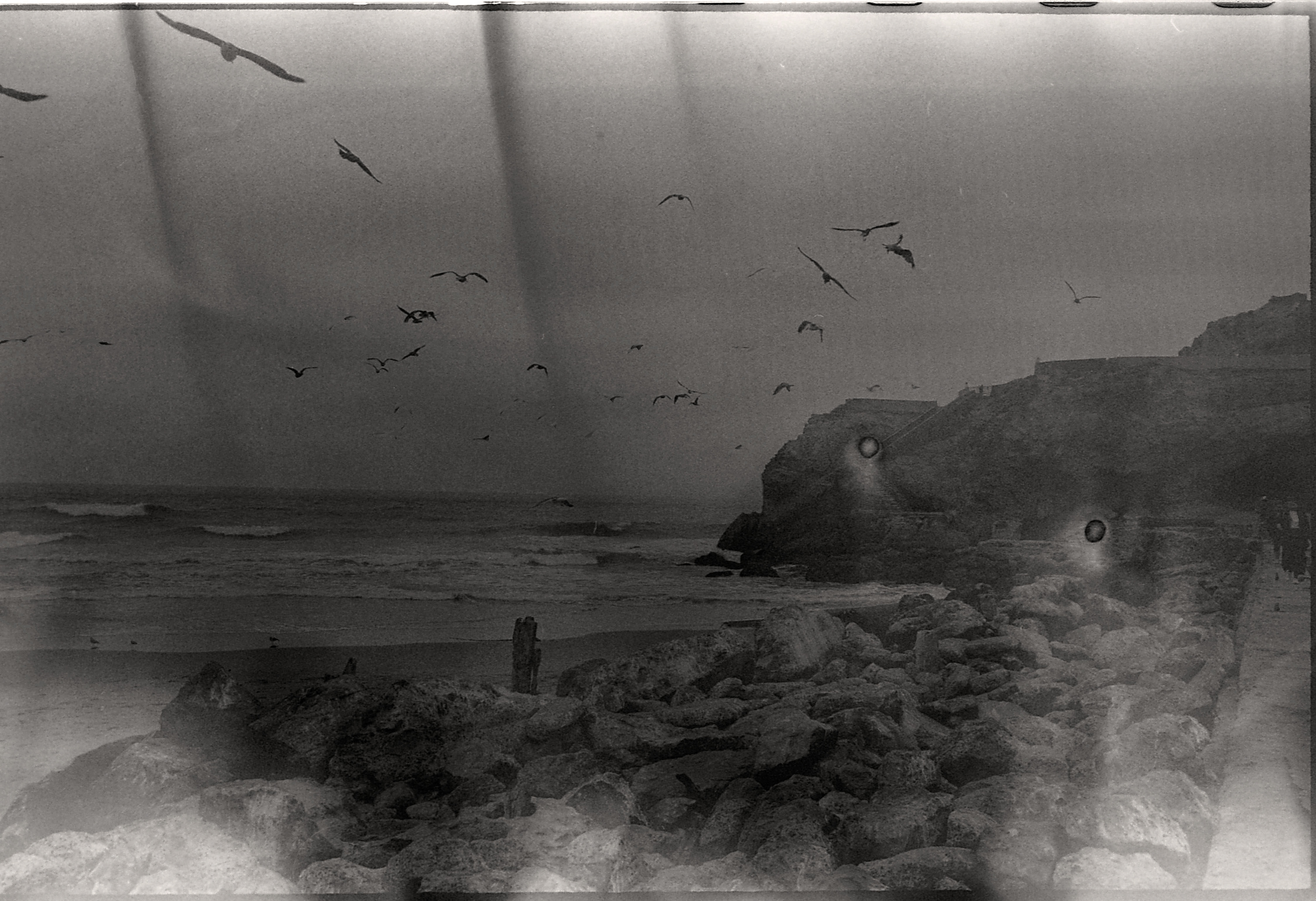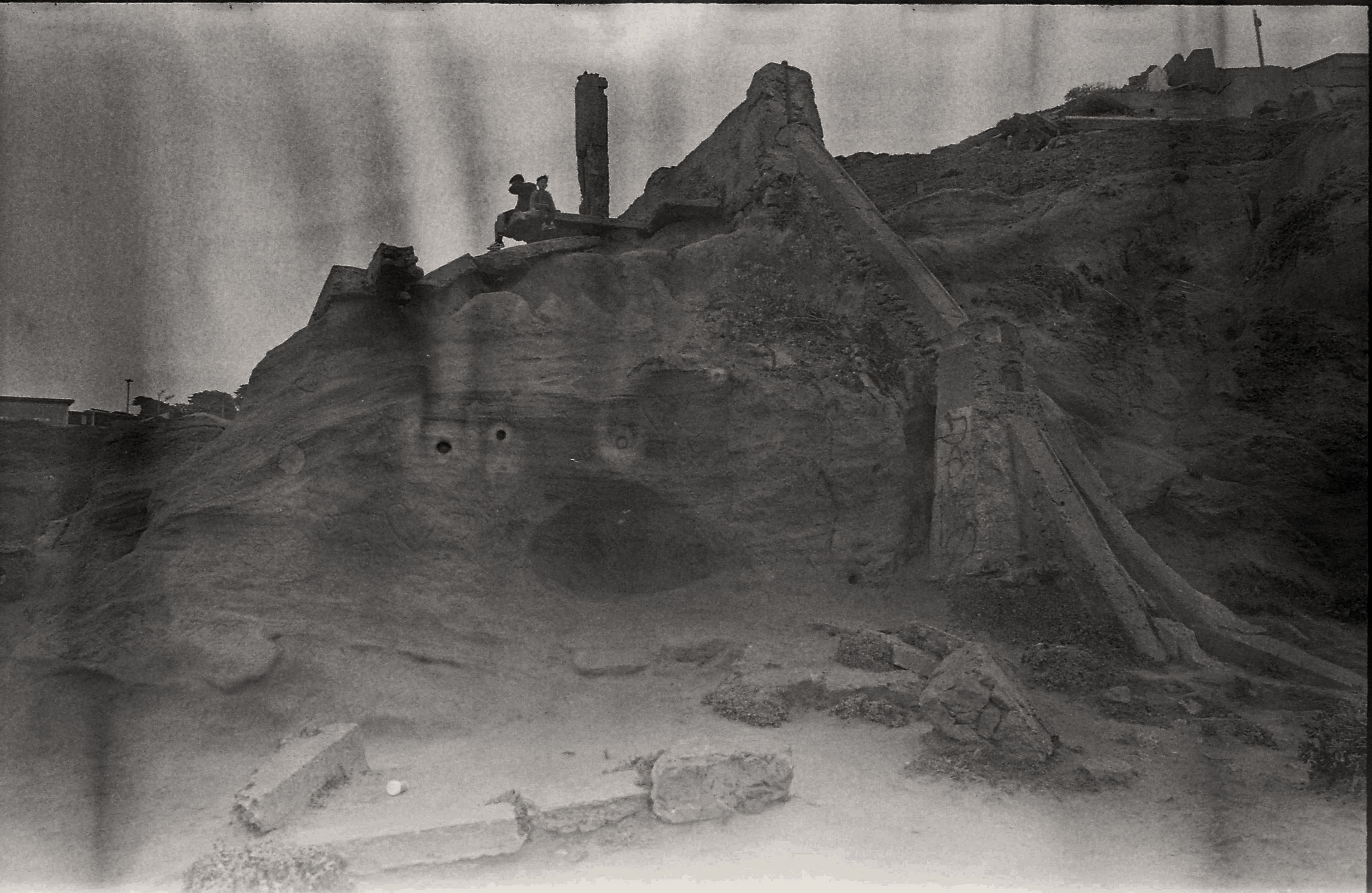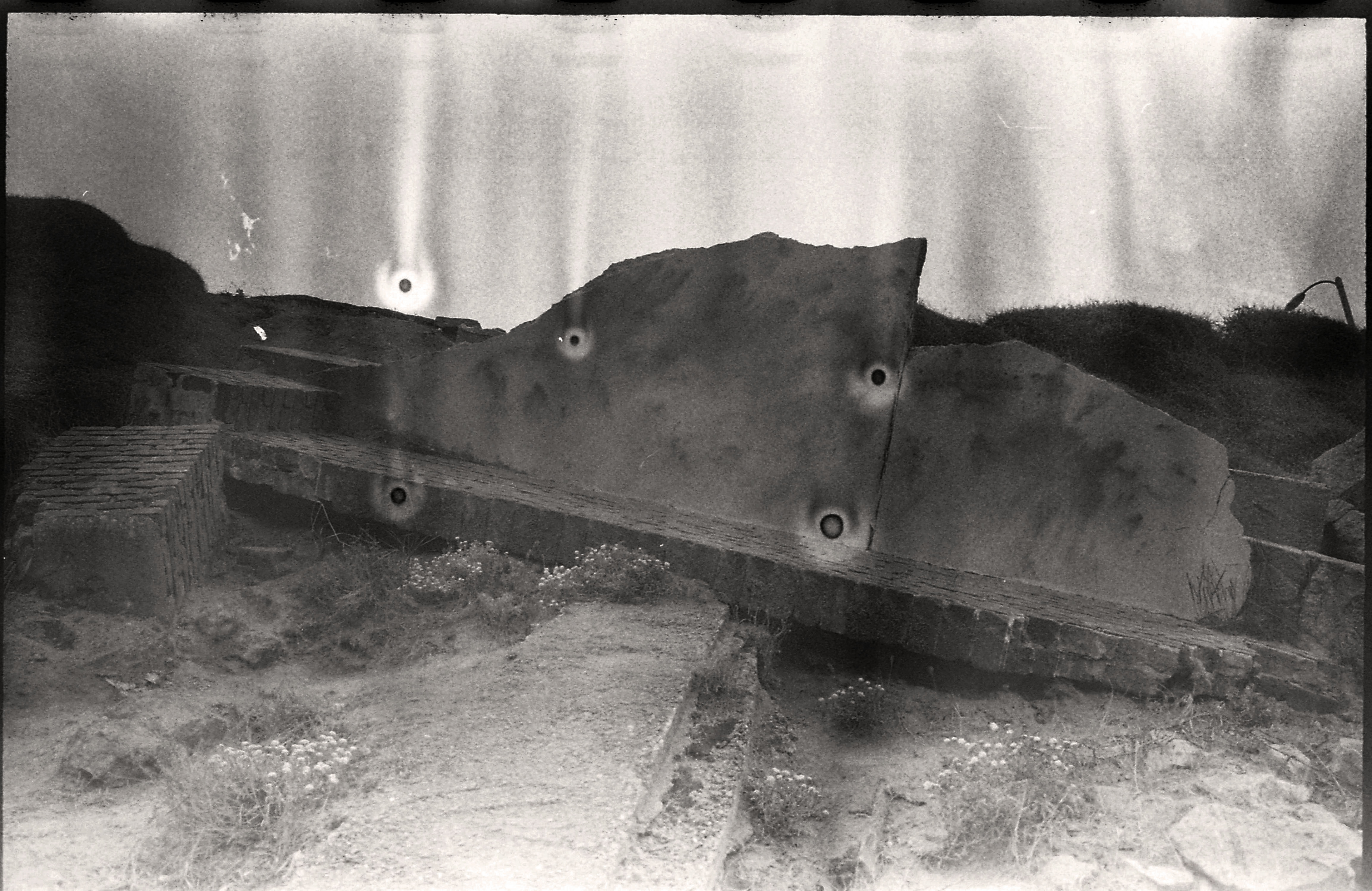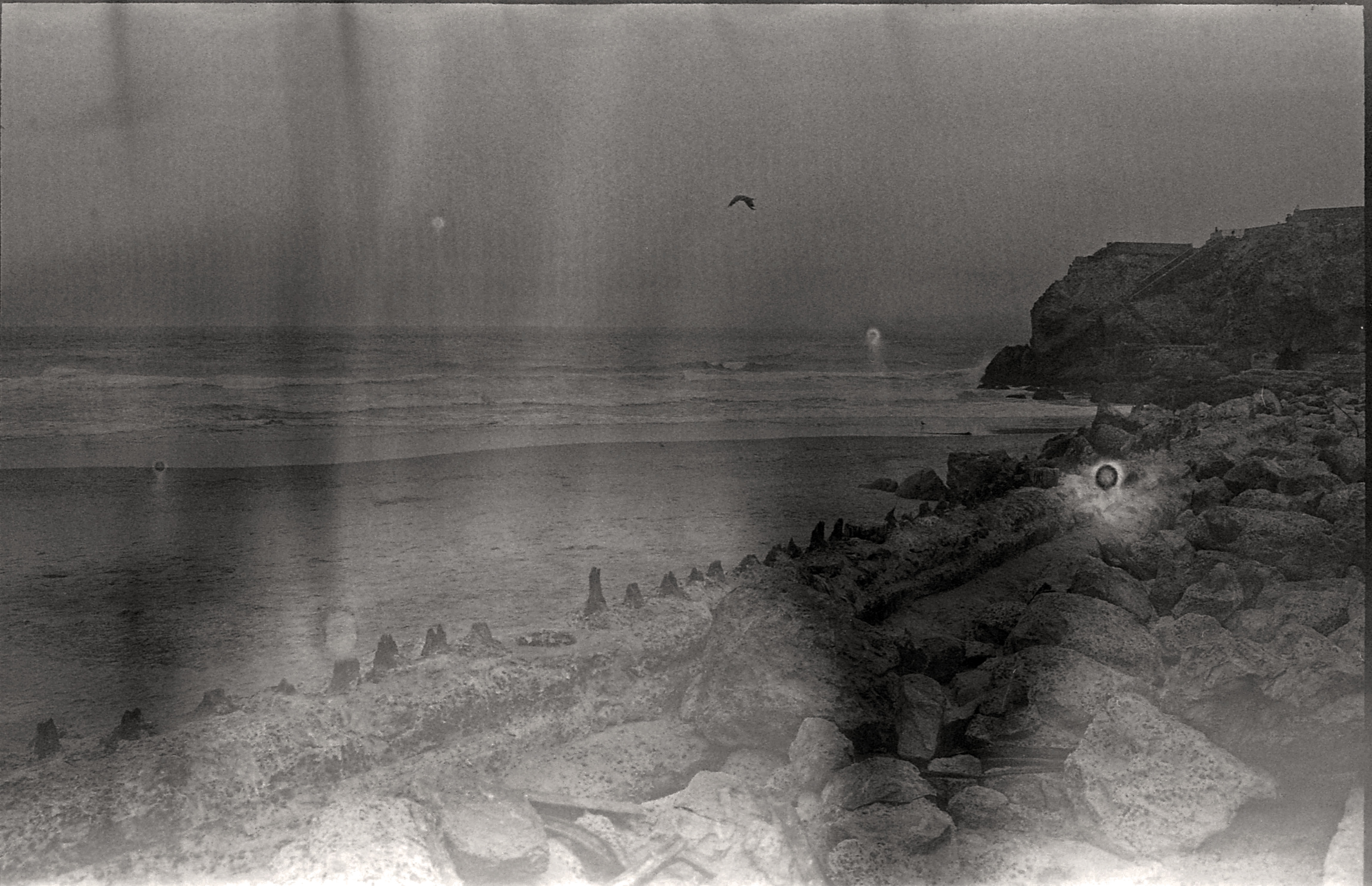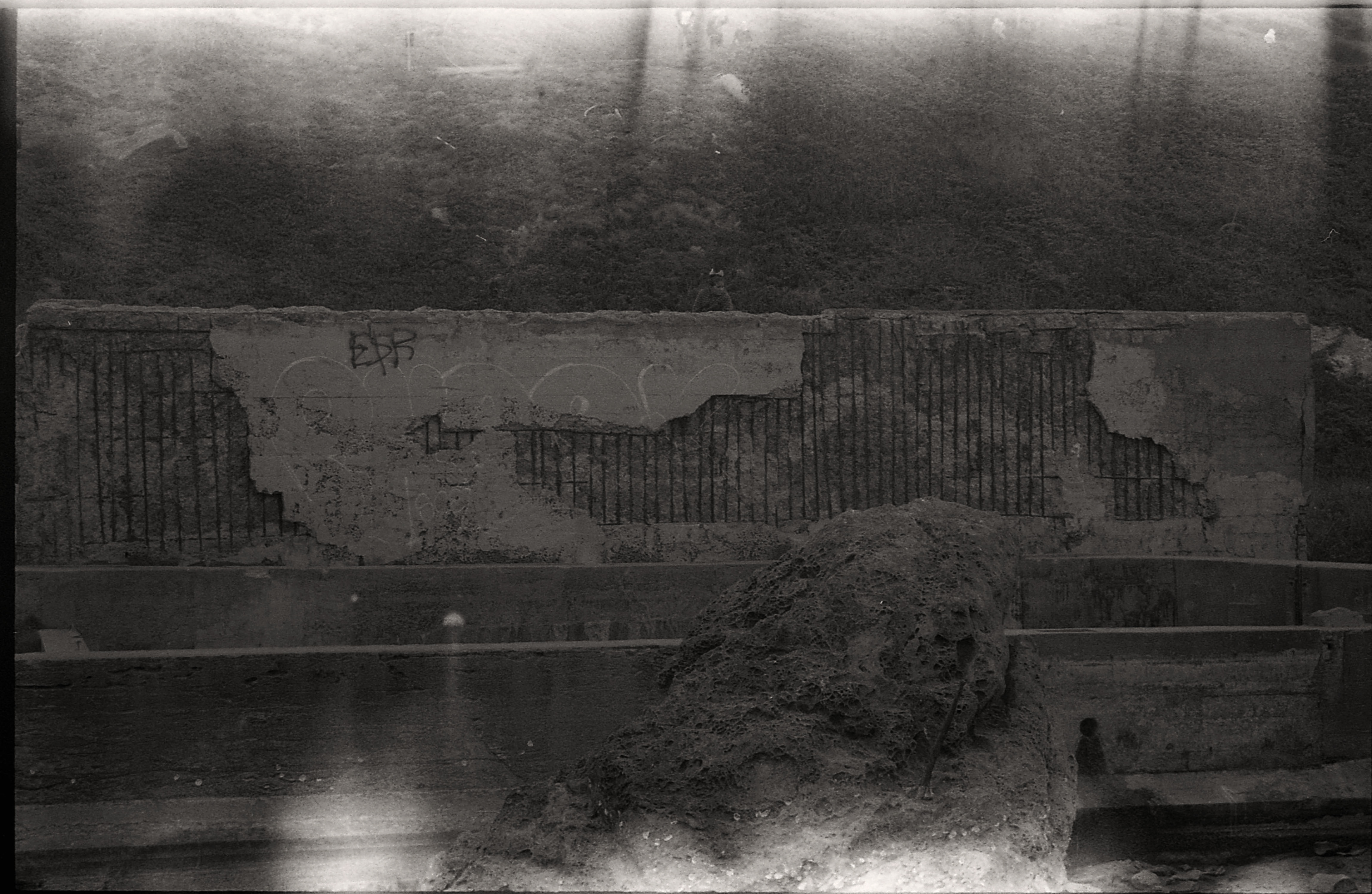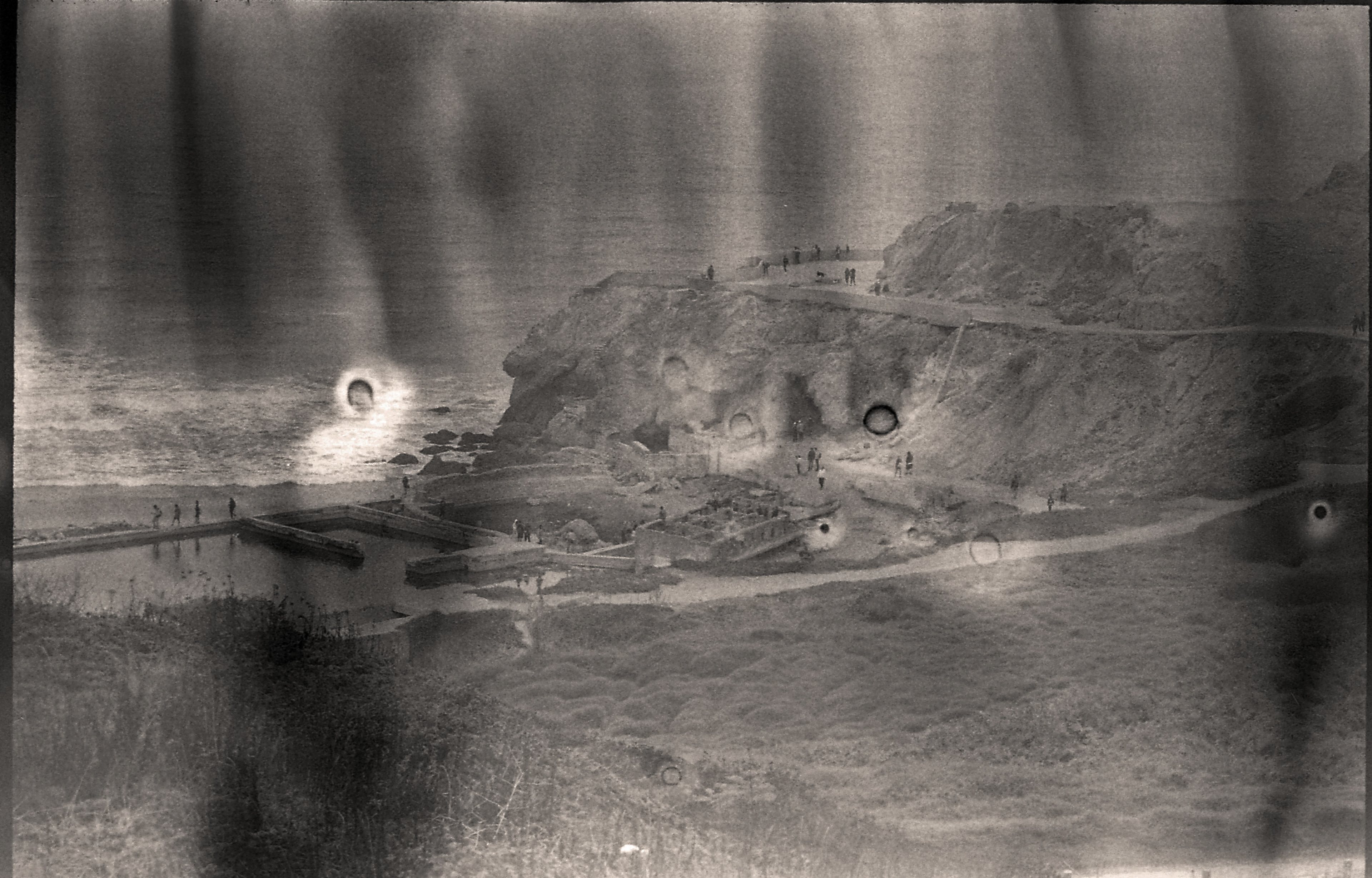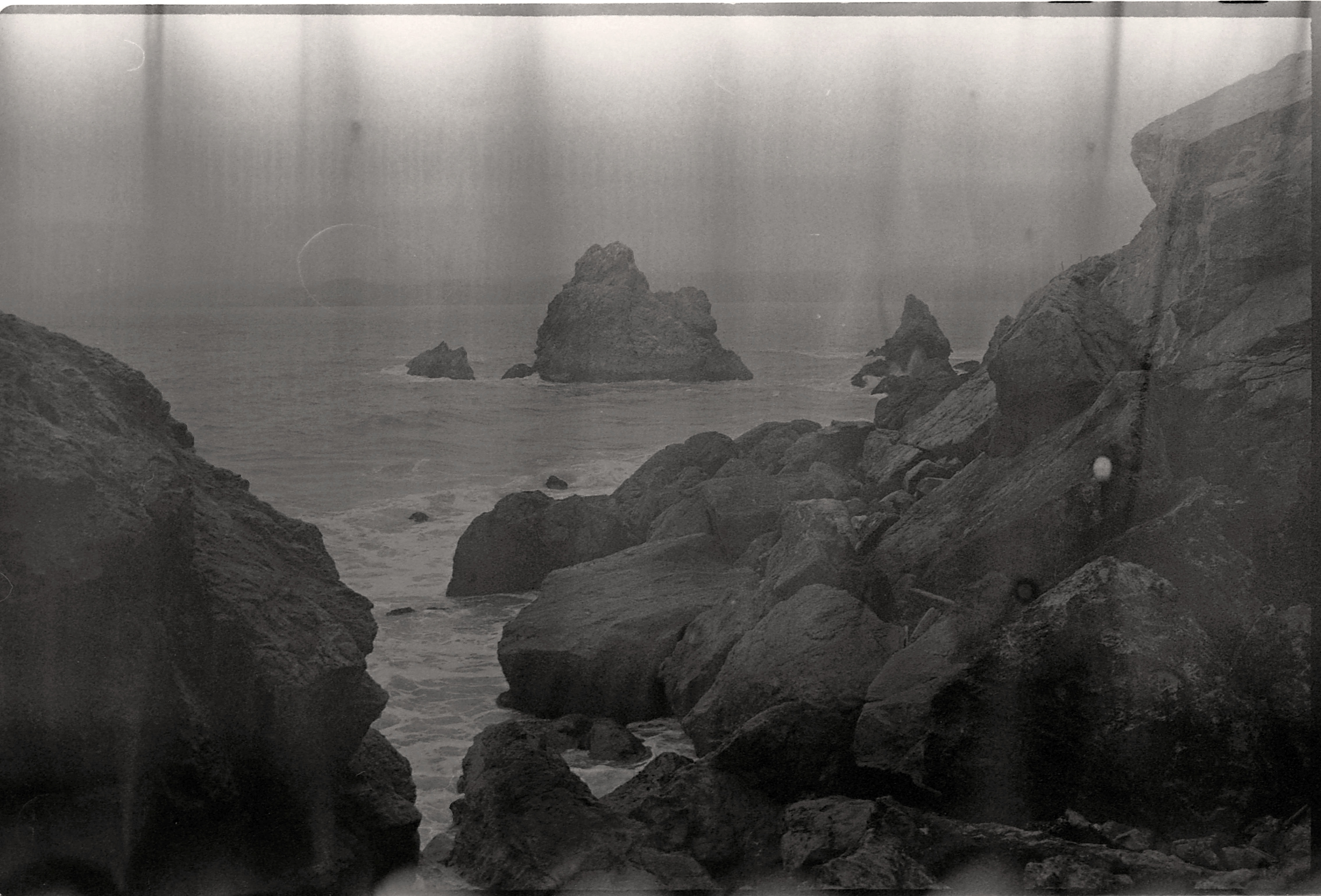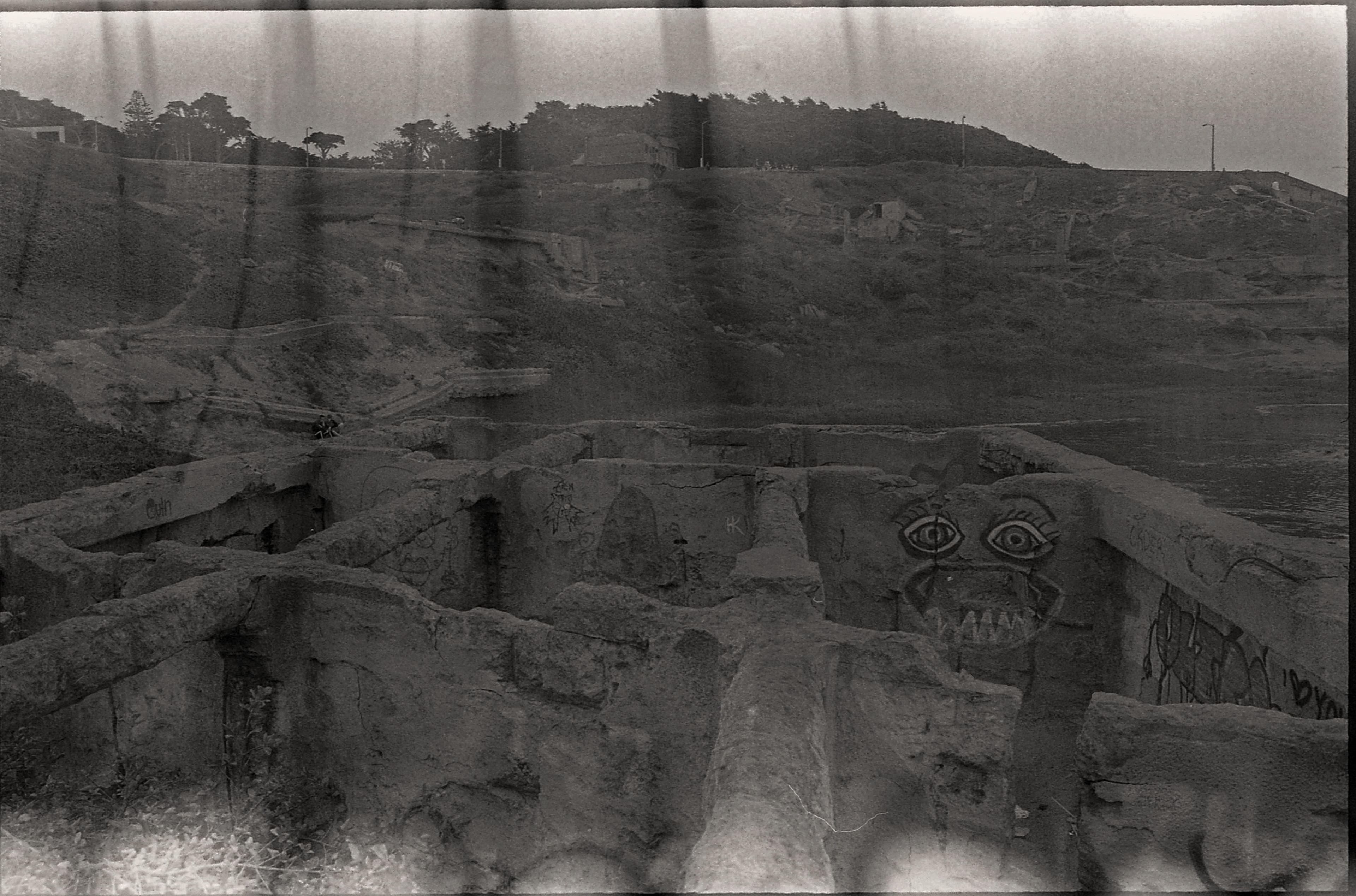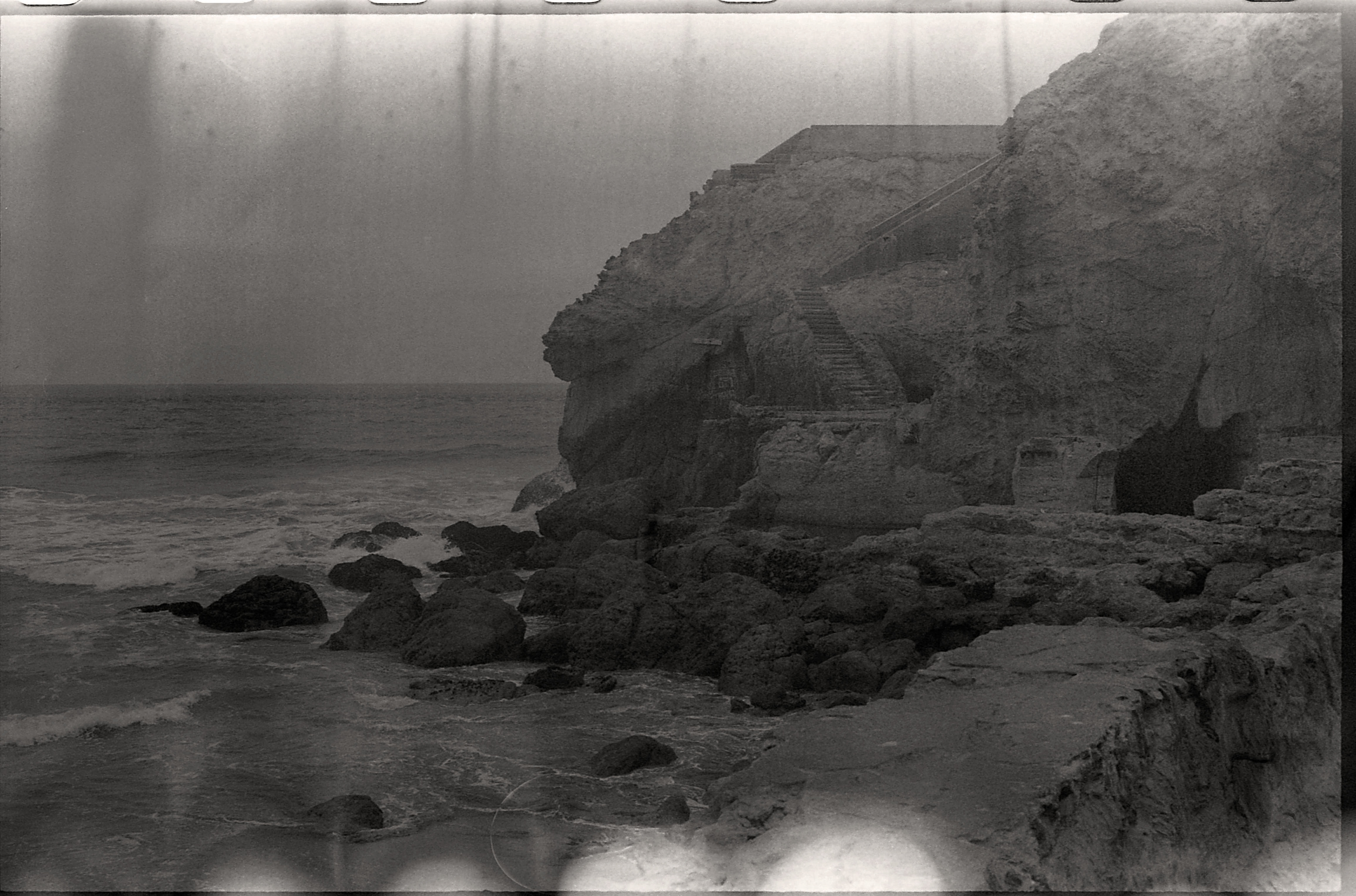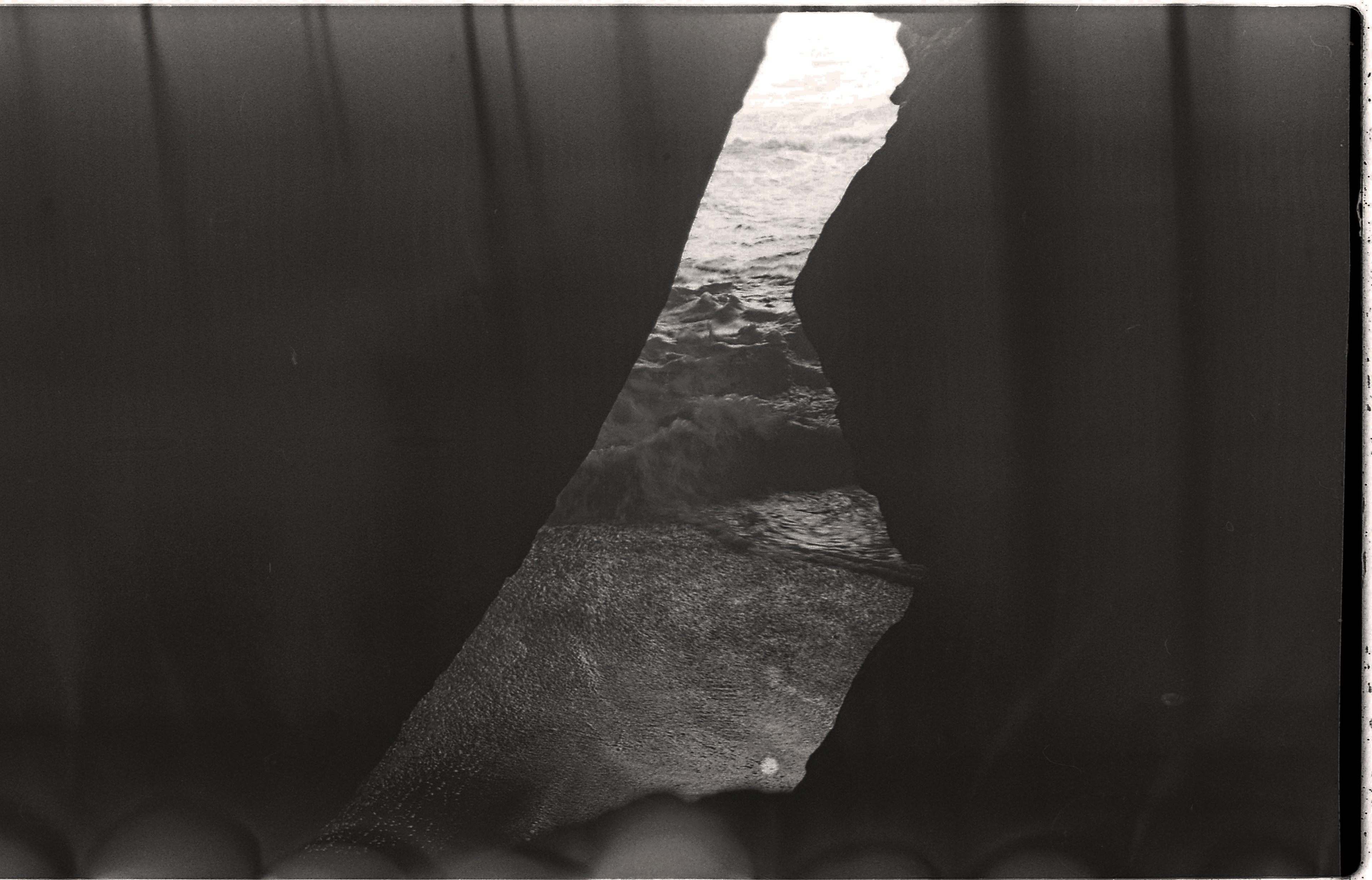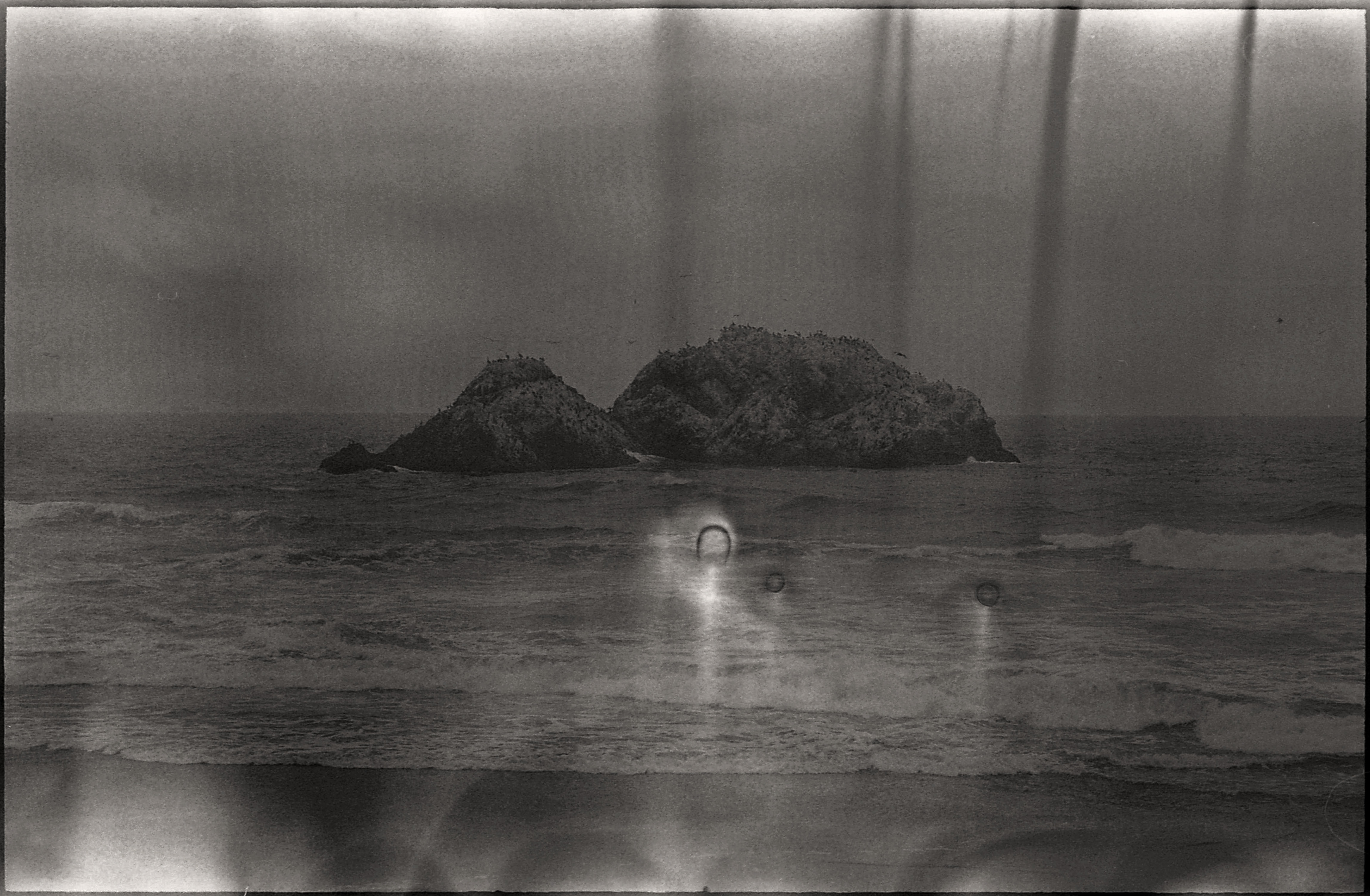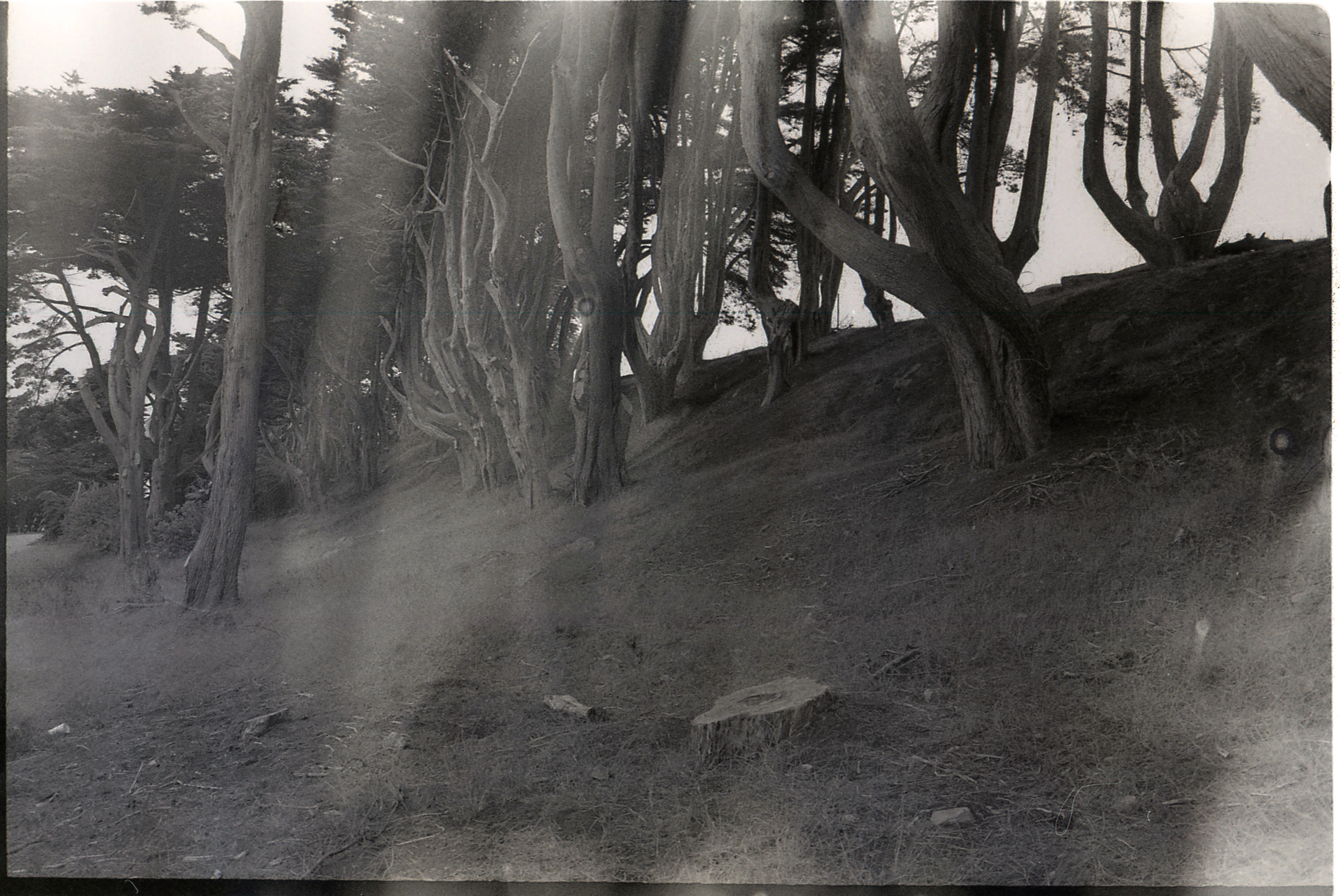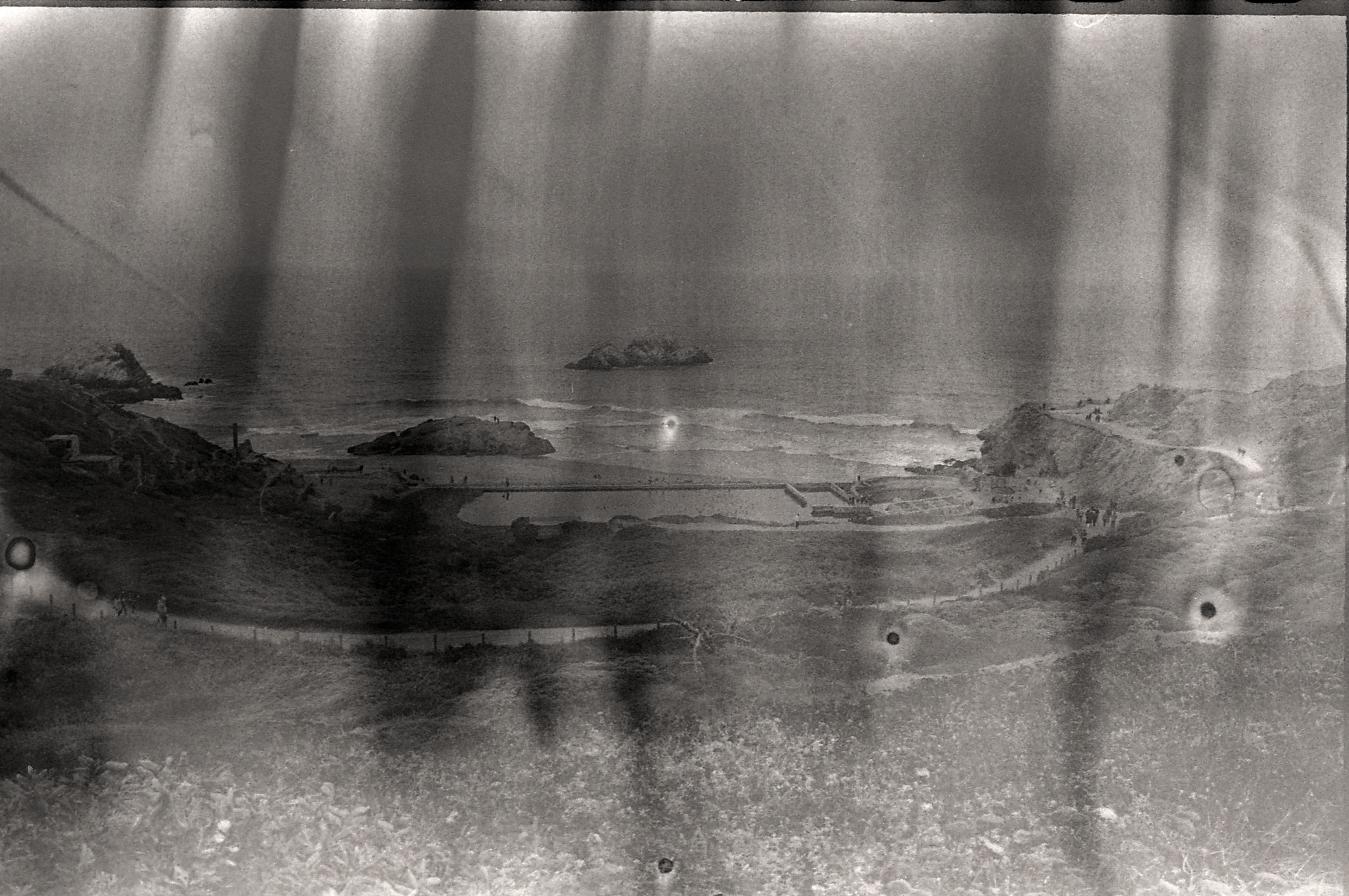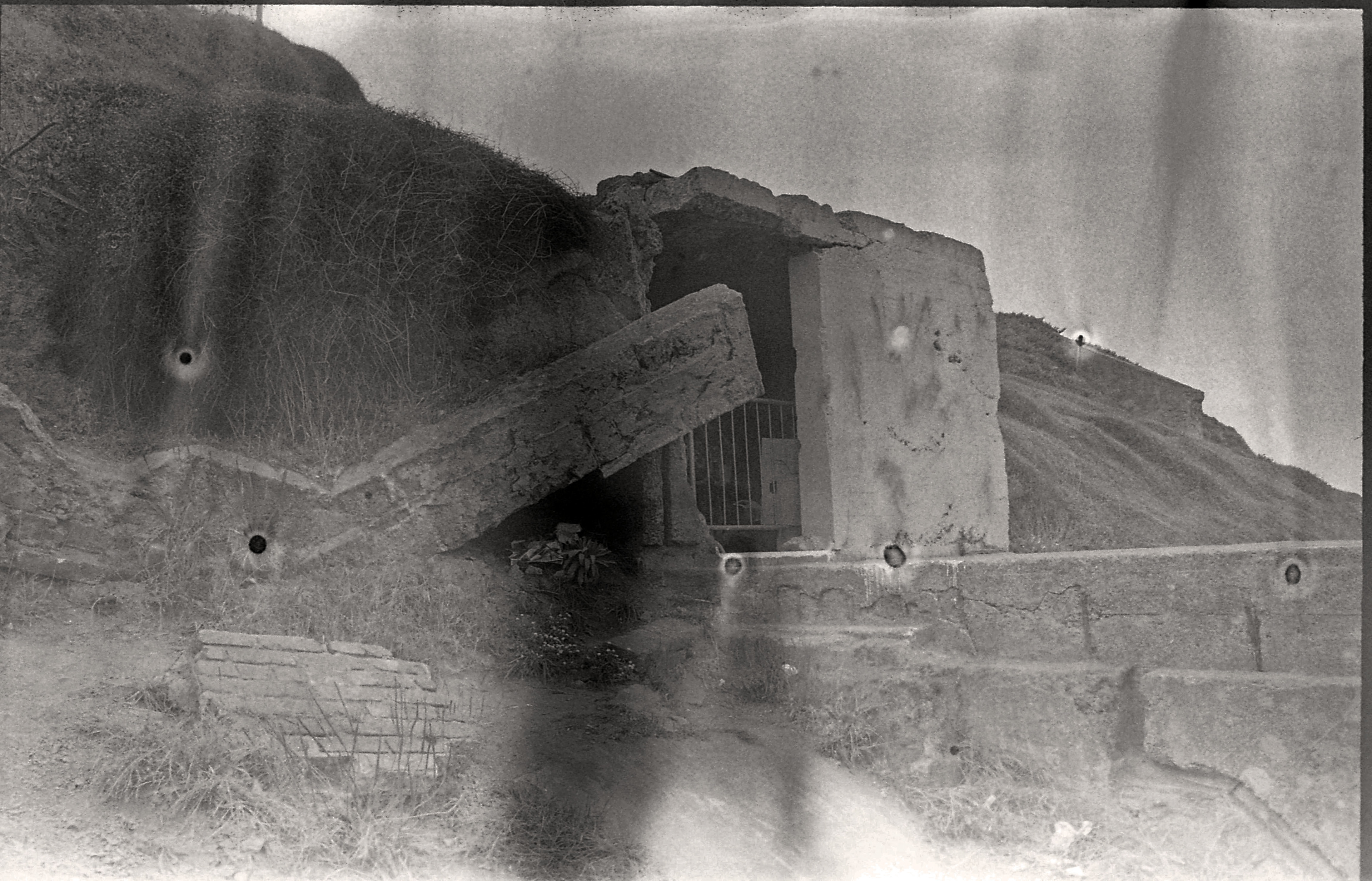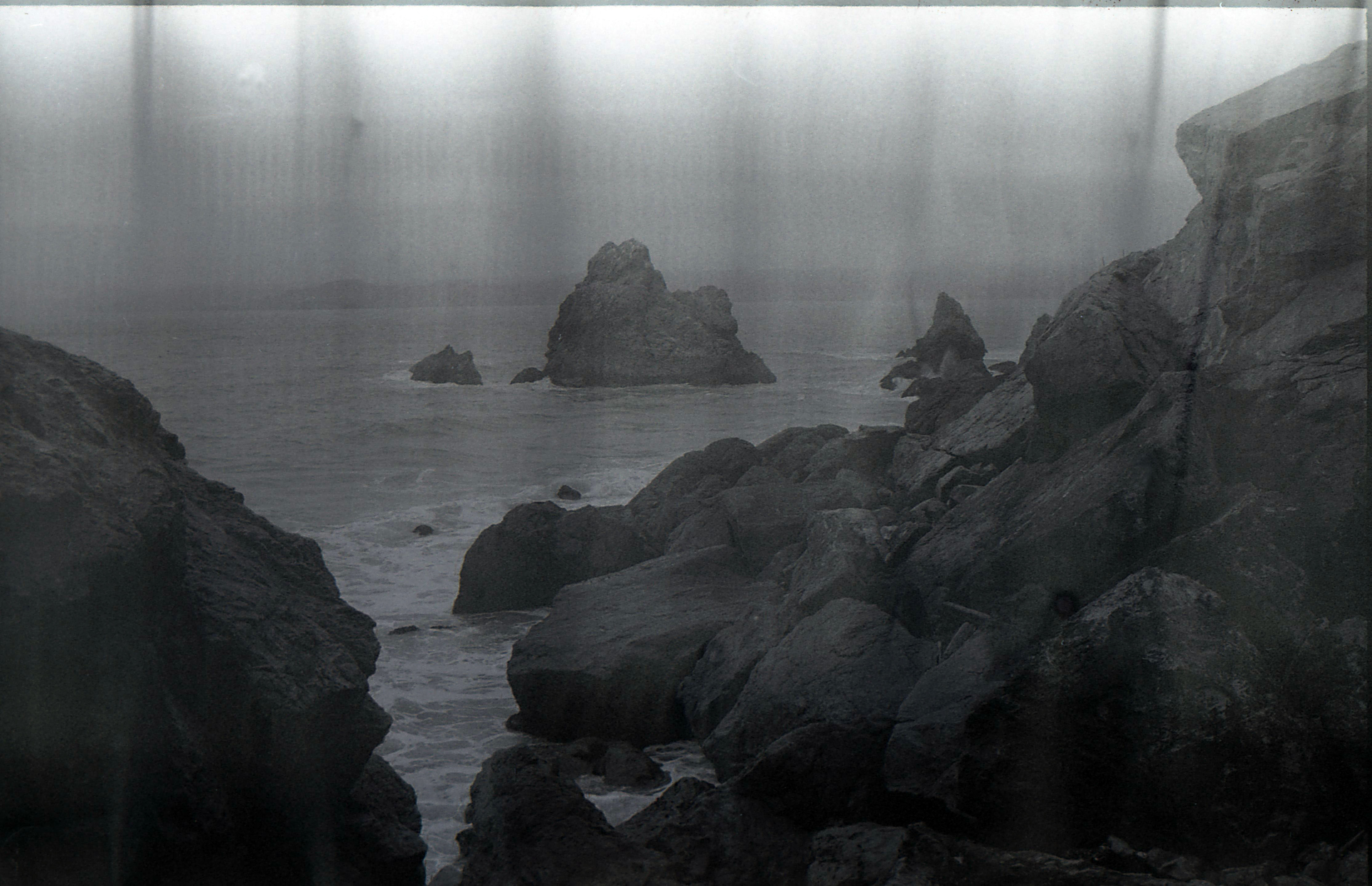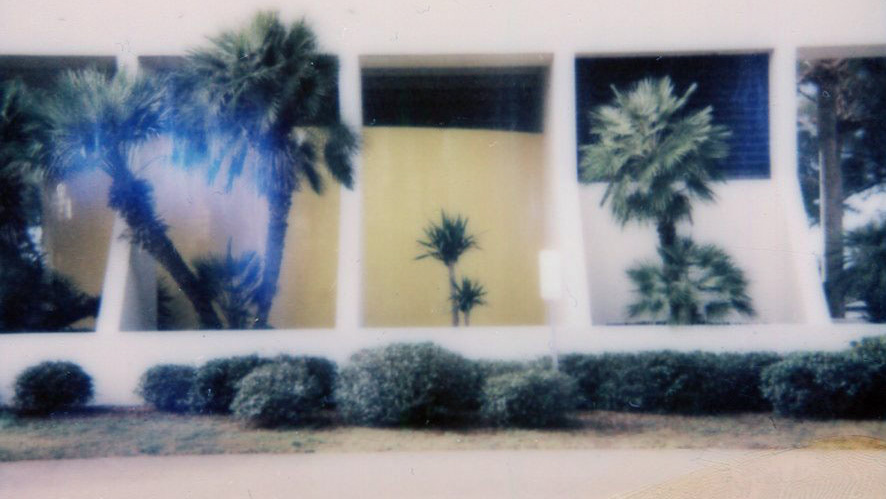Sutro Baths (1896) at Lands End. San Francisco, California
Kodak Tmax 400, scanned negatives
In an aesthetic era that increasingly privileges perfection and modernity, leaving little space for error, I’m driven by the honesty of the ephemeral and the undeniably visceral response that film photography can inspire through the unaltered negative. Organic reactions, grain, light leaks, discoloration, and defective emulsion - preserved by-products of the development process.
Remaining loyal to this, I chose to leave the Sutro Baths photographic series unaltered. In preserving this authentic form, their sense of time and memory is retained. The representation of space through a camera-centric vision raises speculations despite this. The distinction between existence and abstraction - what does appear in the photos is a photographic rendering of space. While space is an illusion, time is real and accounted for.
The baths themselves are imbued with emotional information. On this dismal, clouded day, pockets of visitors explored this historic and desolate landscape. This grandiose venture begun by Adolf Sutro in 1896, went through numerous changes and expansions before a curious fire in 1966, while it was in the hands of developers in the process of demolishing it. What remains now is a field of concrete and metal - the foundations of what once was a magnificent glass structure and feat of engineering, with the tumultuous tides of the Pacific Ocean harnessed to fill the pools found at Sutro Baths.
These ruins seem static, as if they are a fixed ending, made more so by the photographic medium. Of course, this is far from the truth. Time, the elements, the environment can attest to the crumbling terrain. The splendor that was Sutro Baths is still living and dying, giving us a sense of place and timelessness with each visit to Lands End.
